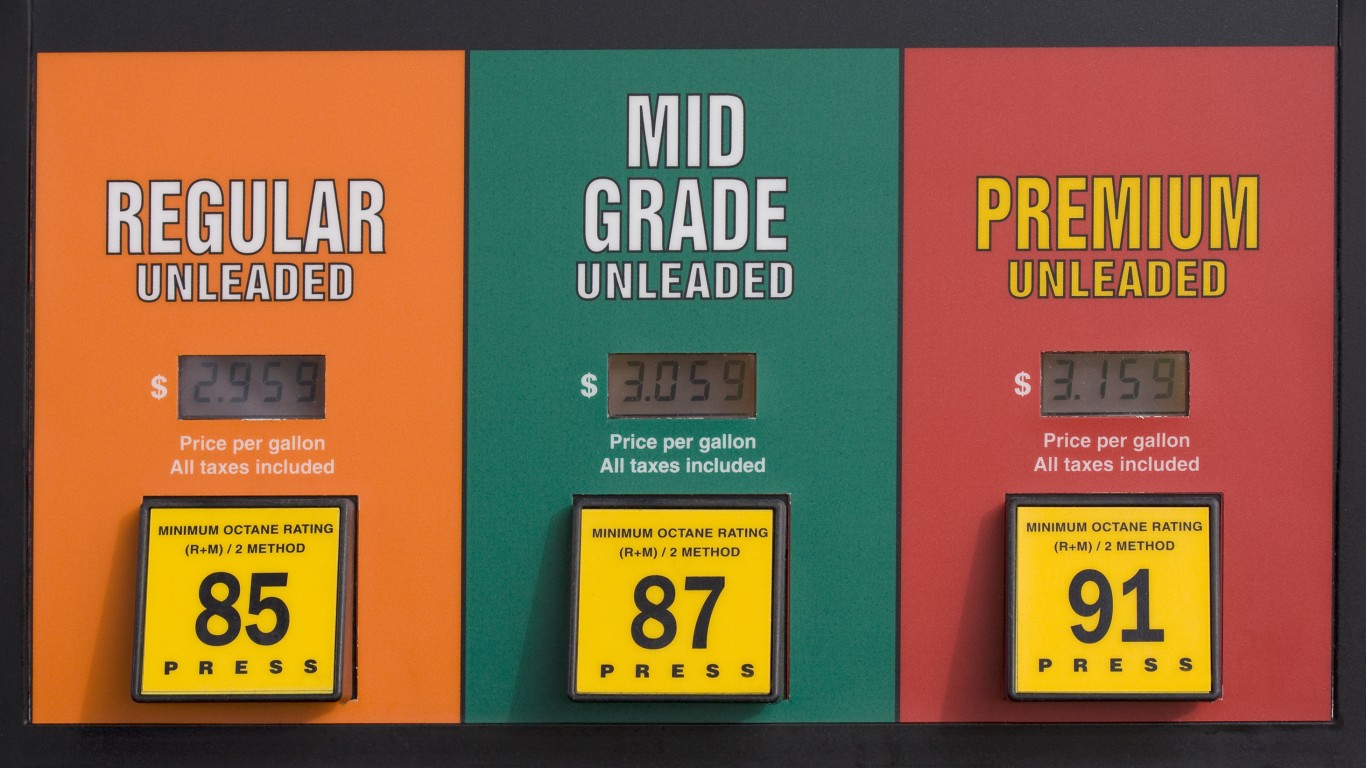
Tuesday evening, the American Petroleum Institute (API) reported that crude inventories fell by 2.3 million barrels in the week ending August 14. For the same period, analysts surveyed by Platts had estimated a decrease of 1.2 million barrels in crude inventories. The API also reported that gasoline inventories decreased by 1.5 million barrels and that distillate stockpiles rose by 776,000 barrels.
Total gasoline inventories decreased by 2.7 million barrels last week, according to the EIA, and remain in the middle of the five-year average range. Total motor gasoline supplied (the agency’s measure of consumption) averaged 9.6 million barrels a day for the past four weeks, up by 6.5% compared with the same period a year ago.
Crude oil dropped to its lowest level of the past 12 months on Tuesday, just below $42 a barrel. Prices have recovered a bit, but if we look at the actual posted price for the day, the news is a bit worse. Enterprise Products was offering to buy West Texas Intermediate (WTI) crude for $39.03 a barrel Wednesday, compared with $39.75 last Wednesday and $41.60 two weeks before that. Since August 5, the posted price of a barrel of WTI is down nearly 5%. The low posted price encourages crude owners to hold on in hopes of a better price.
ALSO READ: 6 Oil and Energy Stocks Analysts Want You to Buy Now
Before the EIA report, WTI crude for October delivery traded down about 1% at around $42.65 a barrel. The WTI price plunged to around $42.250, down more than 2% on the day, shortly after the report was released. The 52-week range on WTI futures is $41.94 to $92.06.
Distillate inventories increased by 600,000 barrels last week and remain in the middle of the average range for this time of year. Distillate product supplied averaged over 3.7 million barrels a day over the past four weeks, down by 6.6% when compared with the same period last year. Distillate production averaged 5.1 million barrels a day last week, about the same as the prior week’s production.
For the past week, crude imports averaged over 8 million barrels a day, up by 475,000 barrels a day compared with the previous week. Refineries were running at 95.1% of capacity, with daily input of about 16.8 million barrels, about 254,000 barrels a day below the previous week’s average. The outage at BP’s Whiting, Ind., facility accounts for nearly all the decline in refining output last week.
According to AAA, the current national average pump price per gallon of regular gasoline is $2.656, up from $2.586 a week ago and down from $2.756 a month ago. Last year at this time, a gallon of regular cost $3.446 on average in the United States. Again, the BP outage gets most of the blame for the increase in pump prices.
ALSO READ: Why UBS Says to Buy the Big 3 Diversified Oil Services Stocks
Here is a look at how share prices for two blue-chip stocks and two exchange traded funds reacted to this latest report.
Exxon Mobil Corp. (NYSE: XOM) traded down about 1.2%, at $76.63 in a 52-week range of $76.62 to $100.31. Year to date, Exxon stock traded down about 17% and is down about 21% since early November, as of Tuesday’s close.
Chevron Corp. (NYSE: CVX) traded down about 2.1% to $81.67, in a 52-week range of $81.49 to $129.53. The low was posted Wednesday morning. As of Tuesday’s close, Chevron shares had dropped about 27% year to date and traded down about 32% since early November.
The United States Oil ETF (NYSEMKT: USO) traded down about 2.4%, at $13.72 in a 52-week range of $113.71 to $36.17. The low was posted Wednesday morning.
The Market Vectors Oil Services ETF (NYSEMKT: OIH) traded down about 1.5% to $30.43, in a 52-week range of $30.14 to $55.43.
Are You Ahead, or Behind on Retirement? (sponsor)
If you’re one of the over 4 Million Americans set to retire this year, you may want to pay attention.
Finding a financial advisor who puts your interest first can be the difference between a rich retirement and barely getting by, and today it’s easier than ever. SmartAsset’s free tool matches you with up to three fiduciary financial advisors that serve your area in minutes. Each advisor has been carefully vetted, and must act in your best interests. Start your search now.
Don’t waste another minute; get started right here and help your retirement dreams become a retirement reality.
Thank you for reading! Have some feedback for us?
Contact the 24/7 Wall St. editorial team.




